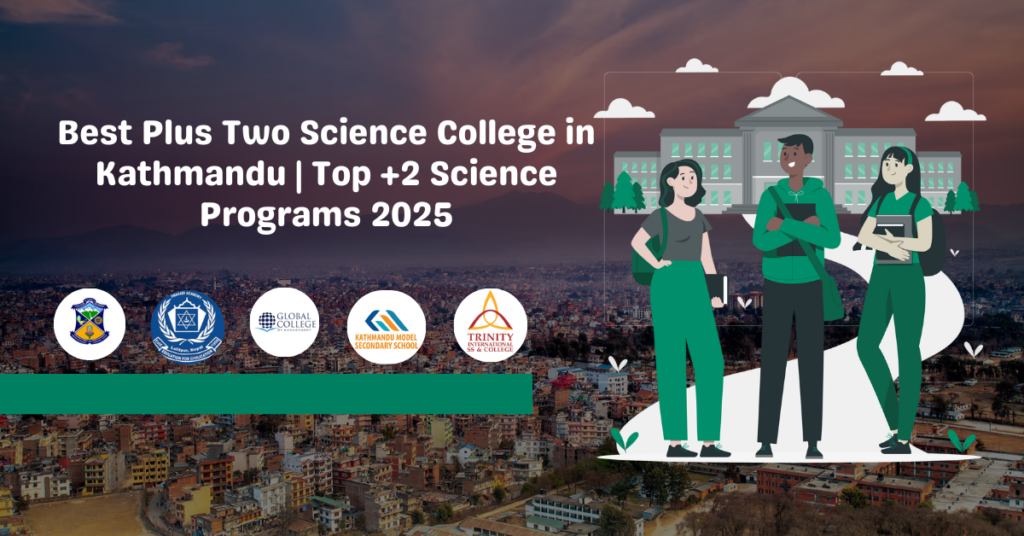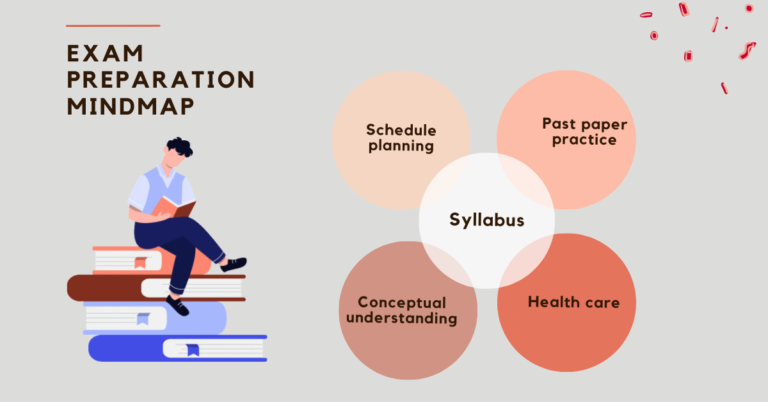Best Plus Two Science College in Kathmandu


Choosing the best plus two science college in Kathmandu can feel overwhelming—like trying to find a single star in the night sky. With so many institutions claiming to offer “world-class education,” it’s easy to get lost in the noise. But here’s the truth: not all colleges are created equal, and making the right decision now can lay a solid foundation for your career in engineering, medicine, IT, or research. Kathmandu, the bustling heart of Nepal, is home to some of the finest science colleges in the country. From academic excellence and experienced faculty to modern labs and global tie-ups, the capital offers an unbeatable combo for science aspirants.
This guide is more than just a list. It’s your complete resource to understanding what makes a science college the “best” in Kathmandu—from accreditation and results to real student experiences and future opportunities. We’ll walk you through the must-know information about curriculum, costs, college culture, and career scope. So whether you’re a student aiming to top board exams or a parent looking to secure your child’s future, this post has got you covered.
Let’s dive in and find the science college that doesn’t just teach—but transforms.
Introduction to Plus Two Science Education in Nepal
What is the Plus Two Science Stream?
The “Plus Two” education system in Nepal is a continuation of the Secondary Education Examination (SEE), designed to bridge the gap between school and university. Among its streams—Science, Management, Humanities, and Education—Science remains the most rigorous and prestigious. This stream typically covers core subjects like Physics, Chemistry, Biology, and Mathematics, alongside English and Computer Science or Environmental Science.
The structure of +2 Science in Nepal usually involves:
- Grade XI: Foundation subjects and core concepts
- Grade XII: Advanced topics and exam preparation
Many students in this stream aim for careers in medicine, engineering, pure sciences, or abroad studies in related fields. A strong science background also provides access to highly competitive entrance exams like MBBS, B.E., and SAT.
But here’s the kicker: simply enrolling in science isn’t enough. The quality of education, faculty, labs, and exposure matter more than the name on the certificate. That’s why choosing the right college is key.
Importance of Science Stream in Academic Career
The science stream is often seen as the gateway to some of the most respected professions. Whether you’re eyeing a stethoscope, a code-filled monitor, or a lab experiment that could change the world, science is your ticket. It teaches critical thinking, analytical reasoning, and a disciplined approach to problem-solving—skills that are indispensable in any modern career.
Moreover, the Plus Two Science stream acts as a preparatory ground for:
- Medical entrance exams (e.g., NEET, IOM)
- Engineering entrance (e.g., IOE, KU, abroad SATs)
- International studies (via A-level equivalency or science-heavy curriculum)
In short, if your dream career involves logic, numbers, research, or innovation—this stream gives you the runway to take off.
Why Choose Kathmandu for +2 Science Studies?
Capital Advantage: Educational Infrastructure
Kathmandu is not just the political capital of Nepal—it’s the educational epicenter too. The city boasts a rich ecosystem of schools, colleges, coaching centers, libraries, and digital resources that collectively support academic excellence. Students studying in Kathmandu enjoy:
- Access to national-level entrance prep classes
- Proximity to reputed universities and hospitals
- Experienced and qualified teaching faculty
- Frequent seminars, Olympiads, and academic events
Unlike smaller towns, Kathmandu offers real-time access to evolving technology, modern laboratories, and academic exposure that can sharpen your competitive edge. Whether it’s library access, mock exams, or guest lectures from industry experts—students here are in the thick of things.
Access to Top Faculty and Institutions
One major reason why many students migrate to Kathmandu for +2 is the sheer quality of educators. Most reputed colleges in the city have a blend of:
- PhD holders and published researchers
- Professionals with international exposure
- Veteran NEB curriculum experts
These teachers don’t just teach—they mentor. They guide you through entrance prep, lab experiments, research ideas, and even career counseling. It’s not uncommon for colleges in Kathmandu to boast of their alumni reaching MIT, Oxford, or top Indian universities—because quality guidance makes all the difference.
Key Factors to Consider When Choosing a Science College
Choosing a college isn’t just about the biggest billboard or the flashiest website. If you want real results, you need to look under the hood. Here’s what matters:
Accreditation and Affiliations
Always check if the college is affiliated with the National Examination Board (NEB) of Nepal or offers international curriculums like Cambridge A-levels. Accreditation ensures the degree is recognized nationally and internationally. Without it, you could face issues when applying abroad or for further studies.
Faculty Qualifications
A college is only as good as its teachers. Look for:
- Years of experience
- Student-to-teacher ratio
- Specialization in science education
- Reviews or rankings of teaching quality
Many top colleges publish their faculty profiles online—don’t skip reading them.
Laboratory and Research Facilities
Science without labs is like driving without wheels. You need hands-on experience. The best colleges have:
- Fully equipped Physics, Chemistry, and Biology labs
- Dedicated IT labs for Computer Science
- Research programs or science clubs
- Safety and cleanliness protocols
Labs should be modern, safe, and supervised by qualified technicians.
Career Guidance and University Tie-Ups
You want a college that doesn’t just stop at board exams. Great colleges offer:
- Entrance prep classes (IOM, IOE, SAT)
- Partnerships with universities for placements
- Counseling sessions for abroad studies
- Alumni networks for mentorship
Look for colleges that support you from class to career.
Top Plus Two Science Colleges in Kathmandu
Let’s get to the real deal. These colleges consistently top academic charts, entrance exam results, and student satisfaction ratings:
St. Xavier’s College
A Jesuit institution known for academic discipline, top-notch faculty, and holistic education. Admission is fiercely competitive but worth every effort.
Trinity International College
Famed for results and preparation for engineering and medical entrances. Also known for its beautiful campus and modern facilities.
Kathmandu Model College (KMC)
A pioneer in NEB curriculum excellence. Well-equipped labs and a strong science faculty team.
Global College of Management (GCM) – Science Wing
Originally known for management, GCM now offers a solid +2 science program with intensive entrance prep.
Prasadi Academy
A consistent topper in NEB board results with disciplined academics and a meritocratic culture.
In-Depth Review: St. Xavier’s College
History and Mission
St. Xavier’s College, located in Maitighar, Kathmandu, is one of Nepal’s most prestigious institutions. Established in 1988 by the Society of Jesus (Jesuits), the college stands as a beacon of excellence and integrity. Its mission isn’t just to educate but to transform young minds into global leaders with a strong ethical foundation. The school emphasizes holistic education, fostering intellectual, spiritual, and emotional development.
With over three decades of academic distinction, St. Xavier’s College continues to attract some of the brightest students from across Nepal. Its legacy is built on discipline, quality, and values, making it a top choice for +2 Science aspirants.
Admission Process and Criteria
Admission at St. Xavier’s is highly competitive. Here’s a quick breakdown:
- Eligibility: Minimum GPA of 3.6 in SEE with strong grades in Science, Mathematics, and English.
- Entrance Exam: Includes objective questions from Science, Math, and English.
- Interview: Shortlisted candidates are interviewed by a panel for final selection.
Admissions open right after SEE results, and due to its popularity, forms are often sold out within days.
Facilities, Faculty, and Academic Excellence
St. Xavier’s College doesn’t compromise on quality. Their facilities include:
- State-of-the-art science laboratories
- Modern library with digital access
- Sports grounds and multipurpose halls
- Smart classrooms with projectors and AV support
The faculty is another highlight. Most teachers have advanced degrees and years of experience. The college also offers career counseling, university tie-ups, and regular seminars with international professors.
Their students regularly top NEB board exams and secure placements in top universities in the US, UK, India, and Australia.
In-Depth Review: Trinity International College
Courses Offered
Trinity International College in Dillibazar is widely recognized for its rigorous +2 Science program under the NEB curriculum. It offers:
- Physics, Chemistry, Biology, and Math
- Computer Science as an elective
- Regular mock tests and internal evaluations
- Entrance preparation integrated into the curriculum
The college ensures that students are not just prepared for board exams but also national-level competitive tests like IOM and IOE.
Performance and Results
Trinity has a reputation for delivering consistent results. Many of its students rank among the top 10 in NEB Board Exams annually. Its results-driven culture pushes students toward high academic achievement without compromising extracurriculars.
Success is celebrated here, and so is effort. The college believes in nurturing every student with personalized guidance, group tutoring, and remedial classes when needed.
Student Life and Extra-Curriculars
Life at Trinity is not all books. Students can engage in:
- Science fairs and innovation challenges
- Debates, essay writing, and public speaking
- Music, arts, and sports competitions
- College trips and excursions
There are dedicated clubs for environment, science, literature, and robotics. The environment is collaborative and competitive, encouraging growth in every direction.
Moreover, Trinity has a structured mentorship system where each student is assigned a counselor for academic and personal guidance.
Admission Process for +2 Science Colleges in Kathmandu
Eligibility Criteria
Most top +2 science colleges in Kathmandu follow a similar eligibility structure:
- SEE GPA Requirement: 3.2 to 3.6 minimum
- Subject Grades: Minimum B+ in Science, Math, and English
- Age Limit: Generally no restriction, but students should have cleared SEE recently
Some colleges accept foreign SEE-equivalent grades with a certificate from the Curriculum Development Center (CDC), Nepal.
Entrance Exams and Deadlines
Entrance tests are common and often mandatory. They usually test:
- Basic knowledge in Physics, Chemistry, Biology, and Math
- English comprehension and grammar
- Logical reasoning (optional in some colleges)
Key admission deadlines:
- Forms Open: Within 1–2 weeks of SEE result announcement
- Entrance Dates: Within 10–15 days post-application deadline
- Results & Interviews: Declared within 3–5 days
Colleges like St. Xavier’s and Trinity see intense competition, so it’s wise to apply to multiple colleges simultaneously to keep your options open.
Documents Required
Standard documents needed at the time of application:
- SEE Grade Sheet and Transcript
- SEE Character Certificate
- Passport-sized photos (4-6 copies)
- Citizenship Certificate or Birth Certificate (for age proof)
- Recommendation letters (optional but useful)
For foreign nationals, valid visa documents and equivalent certifications are required.
Fee Structure of Top Science Colleges
Comparative Fee Table
Here’s a rough breakdown of fee structures across popular colleges in Kathmandu:
| College Name | Admission Fee | Annual Tuition Fee | Lab Fee | Total Estimated Cost (2 Years) |
|---|---|---|---|---|
| St. Xavier’s College | NPR 25,000 | NPR 160,000/year | NPR 10,000 | NPR 355,000 |
| Trinity International | NPR 20,000 | NPR 140,000/year | NPR 8,000 | NPR 308,000 |
| Kathmandu Model College | NPR 15,000 | NPR 135,000/year | NPR 7,000 | NPR 292,000 |
| Prasadi Academy | NPR 18,000 | NPR 150,000/year | NPR 8,000 | NPR 326,000 |
| GCM (Science Wing) | NPR 12,000 | NPR 120,000/year | NPR 5,000 | NPR 257,000 |
Note: Costs may vary based on optional courses, boarding, and scholarship adjustments.
Scholarship Programs and Discounts
Many colleges offer merit-based scholarships:
- 100% Free: For students with GPA 4.0 and top ranks in entrance tests
- 50–75% Fee Waiver: For high scorers and district toppers
- Need-Based Aid: For students from disadvantaged backgrounds
Institutions like Trinity and St. Xavier’s also offer scholarship entrance exams, which can be attempted independently of the main admission test.
Some private sponsors also offer aid if students are accepted into top colleges.
Hostel and Accommodation Facilities
On-Campus vs Off-Campus Housing
Hostels can make or break your study experience. Colleges like Trinity and KMC offer on-campus hostels that are secure, hygienic, and have fixed routines—perfect for focused study.
Benefits of on-campus living:
- Proximity to class and labs
- Set schedules and supervised study
- Healthy meals and laundry services
Off-campus options include rented rooms or private hostels around the college area. These may offer more freedom but come with more responsibility.
Cost of Living in Kathmandu
Here’s a rough monthly breakdown for a student living in Kathmandu:
- Hostel Fee: NPR 6,000 – NPR 15,000/month
- Meals: NPR 3,000 – NPR 5,000/month
- Books & Supplies: NPR 1,500/month
- Transportation & Miscellaneous: NPR 2,000/month
On average, a student might need around NPR 15,000 – 25,000 per month, depending on lifestyle and accommodation choices.
Scope After +2 Science in Nepal
Entrance to Engineering, Medicine, and IT
Once you complete your +2 Science, a wide range of doors open up. The most immediate and common goal for many students is clearing entrance exams for reputed institutions like:
- Institute of Medicine (IOM)
- Institute of Engineering (IOE)
- Kathmandu University (KU)
- Armed Police Force Medical College
- Pokhara University and Purbanchal University
Thousands of +2 graduates compete every year for limited seats in MBBS, BDS, BSc Nursing, BE, B.Tech, B.Pharm, and BSc CSIT programs. Many colleges in Kathmandu prepare you simultaneously for both NEB board exams and entrance tests, giving you a head start.
Special entrance preparation centers in Kathmandu also offer crash courses and model tests. A strong academic base from a top +2 Science college gives you the clarity and confidence needed to succeed in these highly competitive exams.
Abroad Study Options
Another increasingly popular route for students is pursuing education abroad. Whether it’s the US, UK, Australia, Japan, or India, a +2 Science certificate from a reputed college in Kathmandu is widely accepted.
Key opportunities after +2 Science include:
- Engineering and IT in India (JEE-qualified colleges)
- Medical studies in China, Bangladesh, and Philippines
- Computer Science and AI in Canada and the US
- Biomedical Sciences, Biotechnology, and Research degrees globally
Top science colleges also assist with documentation, SOP writing, and counseling for international admissions. The chances of receiving scholarships abroad increase significantly when you’re from a college with a good reputation and strong academic standing.
Scholarships and Financial Aid
Merit-Based Scholarships
Most +2 colleges in Kathmandu offer generous merit scholarships. These are typically awarded based on:
- SEE GPA (generally 3.8 and above)
- Entrance test performance
- Consistent internal exam scores
For instance:
- St. Xavier’s offers full and partial tuition waivers for board toppers and high-performing entrance candidates.
- Trinity provides up to 100% scholarships based on SEE and entrance ranks.
- KMC and Prasadi offer tiered discounts based on performance.
Some scholarships even cover hostel and book allowances, reducing the overall cost drastically.
Government and Private Sponsorships
In addition to in-house scholarships, there are external sponsorships:
- Ministry of Education (MOE) schemes for underprivileged students
- Dalit, Janajati, and Madhesi-focused aids
- Private organizations like Rotary, Lions Club, and PABSON also sponsor high-potential students
These financial aids aim to promote inclusivity in education and are especially beneficial for deserving students who lack economic means. Some colleges also offer work-study programs where students assist in administrative tasks in exchange for partial fee waivers.
Common Mistakes Students Make While Selecting +2 Colleges
Ignoring Practical Labs
One of the most overlooked aspects is the quality of practical education. A college might offer great theoretical teaching but poor lab support—and that’s a recipe for disaster in the science stream. Always ask:
- How frequently are lab sessions held?
- Are the labs well-equipped?
- Are lab reports part of the internal assessment?
In science, theory and practical must go hand in hand. If the lab is outdated, you’ll find yourself struggling in university or during entrance exams that include practical knowledge.
Chasing Hype Over Quality
Don’t fall for just brand names or flashy advertisements. Ask the right questions:
- What’s the actual NEB result average?
- Where do the alumni study now?
- How accessible is the faculty?
- What’s the class size and student-to-teacher ratio?
Many students blindly follow peers or join colleges that have “buzz” but no real track record. Instead, focus on:
- Value over vanity
- Substance over social media glitz
- Mentorship and community, not just curriculum
Be smart. Visit the campus. Talk to seniors. Check online reviews.
Tips to Excel in +2 Science Studies
Time Management & Self-Study
+2 Science isn’t a walk in the park—it’s more like climbing a steep hill. You’ll need discipline, structure, and a lot of smart work. The most successful students use:
- Time-blocking methods to focus on core subjects daily
- Pomodoro techniques to retain better while studying
- Active recall and spaced repetition for long-term memory
Don’t just rely on classroom lectures. Make it a habit to revise notes the same day. Practice MCQs regularly, and solve sample question papers.
Participating in Competitions and Olympiads
Olympiads and science fairs are game-changers. They boost:
- Your problem-solving skills
- University and scholarship applications
- Your confidence and communication skills
Top colleges encourage students to compete in:
- National Science Olympiads
- Mathematics and IT competitions
- Model United Nations and debates
These platforms also help build a strong CV for abroad study applications.
In short, don’t just study hard—study smart and stay curious.
Final Words: Making the Right Choice for Your Future
Selecting the best plus two science college in Kathmandu isn’t just about academics—it’s about finding the place where your potential can flourish. This choice will shape your study habits, your mindset, and ultimately, your future. Whether you’re aiming to crack the IOM entrance or planning to study biotechnology in Australia, your +2 experience lays the foundation.
So, how do you make the right call?
- Visit campuses in person.
- Talk to current students and alumni.
- Evaluate faculty credentials and lab quality.
- Look beyond just SEE GPA cut-offs—focus on culture, support, and long-term goals.
Remember, a great college doesn’t just prepare you for exams—it prepares you for life. Kathmandu offers a wealth of options, from heritage institutions like St. Xavier’s College to result-driven campuses like Trinity International and Prasadi Academy. Each has its unique strengths, so match your ambitions with what they offer.
Your journey to becoming a doctor, engineer, scientist, or tech leader starts with one smart decision. Choose wisely, study hard, and don’t just aim to pass—aim to excel.
FAQs
1. Which is the best +2 Science College in Kathmandu?
While the definition of “best” varies, St. Xavier’s College, Trinity International College, and Prasadi Academy consistently top the charts in terms of academic results, faculty, and student outcomes.
2. What subjects are included in the +2 Science curriculum?
Core subjects include Physics, Chemistry, Biology, and Mathematics. Electives often include Computer Science, Environmental Science, and extra Mathematics. Students must also take English and Nepali as compulsory subjects.
3. Is hostel compulsory for +2 students?
No, hostel accommodation is optional. However, it’s recommended for students coming from outside the Kathmandu Valley or those seeking a structured academic routine.
4. What is the average fee for a science program in Kathmandu?
Depending on the college, the average two-year fee ranges between NPR 250,000 to 350,000, excluding hostel and transportation. Some colleges also offer scholarships that can reduce this cost.
5. Can I apply for scholarships in more than one college?
Yes, you can. Most colleges allow students to apply for multiple scholarships simultaneously, especially if they are based on entrance performance or SEE results. Just make sure to check individual policies and deadlines.







